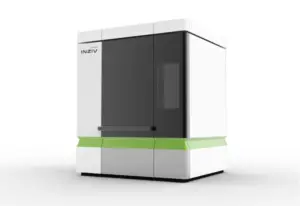With Display Week 2023 approaching, all of us are looking at the frontiers of our industry once again. MicroLED technology certainly sits on that frontier. And the last few years have shown quite a pace of change in tool capabilities to serve this market, with laser tools for mass transfer being the darling tools in terms of new industry capability. For this Display Week, EL (electroluminescent) testing is becoming the new frontier in MicroLED.

Beyond PL (photoluminescent) testing that only gives wavelength information of MicroLED wafers, EL testing also gives full electrical response of the MicroLEDs and is seen as the gold standard for knowing that dies on a wafer are good for transfer to displays. PL measures the response of the MicroLEDs to stimulation by light whereas EL focuses on actual operational performance upon application of an electric current.
This month’s Display Week business conference will see two EL test companies touting their products, including InZiv from Israel. InZiv is a pioneering startup with deep expertise in non-damaging EL testing for MicroLEDs at blistering speeds, with 6M dies per hour testing in the Gen 1 tool being announced at SID and 12M dies per hour following soon in the second-generation tool. This indeed may become a new speed race for high precision, flexible EL testing tools. InZiv’s claim to fame also is that it is capable of giving full electrical information on many million dies for both vertical and flip chip designs For now, flip chips (with both pads down on the bottom of the MicroLED for connection to the TFT array) are the domain of larger die sizes for TV and Automotive applications, while vertical chips are preferred for the tiniest of MicroLEDs, such as potentially used by Apple in their upcoming late 2024/early 2025 Ultra Watch release. This device is being designed with a suggested 8×8 to 10×10 pixel structure according to the analysts at Yole and Omdia.
Typically flip chips have a rectangular footprint with say 15×30 microns or 20×40 microns. The trade-offs and implications of flip chip and vertical chip designs will be important for the industry to understand: vertical chips imply a substantially smaller footprint on wafer and hence lower cost of the emitter content, though they require top contact in the display use post mass transfer, which will pose its own industrial and test implications. Planarizing layers and top electrode contacts will need to be made built on top of such structures. Once these are in place, repair strategies will be much more complicated, necessitating EL testing in situ of working MicroLEDs before planarization. The metrology needs of the industry will rise with such architectures and will increase the role of the EL testing marketplace long term, as tools designed for wafer substrates evolve and expand to display substrate level tools. So then for now the speed race is on for throughput, accuracy, and repeatability of EL test tools.
InZiv is aiming for gold position with 6M dies/hour first and to double that soon thereafter. Given that a TV or automotive wafer today (34×85 micron) has 5 million dies on it (a six inch wafer) and that there will be cost pressure to move to smaller dies (say 20×40 micron soon and then smaller again), then this would represent 17 million dies, or 3 hours of EL testing on Gen 1, and 1.5 hours of test on the second generation InZiv tool. InZiv’s future EL test tool: 6M dies per hour for both vertical and flip chips.
This race in EL testing and inspection will be won not only by the architecture of the fastest tool, the most flexible, and the one with the highest resolution. The winning technology will ultimately need to meet these standards while also causing no damage to the MicroLEDs during the course of inspection. Because EL involves the introduction of electrical current, many methodologies end up damaging the contact pads while exciting the MicroLED chips.

